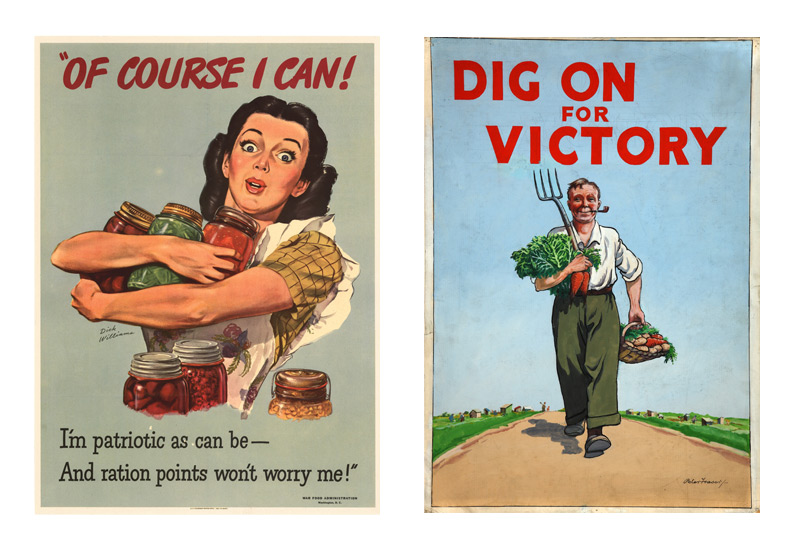WWII 75: Marching to Victory | June 2, 2020

WWII highlights from the Truman Library’s archives and collections
Marching to Victory: Victory Gardens
June 2, 1945
Although Nazi Germany had surrendered weeks earlier and the Japanese Empire was near collapse, President Truman sent a strong message to Americans on June 2, 1945 about winning the war…and winning the peace.
“In this fourth year of war the need for every ounce of food which the American people can produce and preserve is greater than ever before…. Civilian supplies of commercially canned fruits and vegetables are now at the lowest point of the war, and next winter will be one-fourth less than last year.”
President Truman’s challenge to Americans: grow victory gardens, preserve the harvest, and conserve, “wasting not an ounce.”
Throughout the war, Americans on the home front contributed to the war effort by cutting back on consumption (both voluntarily and through rationing) and ramping up production. Across the nation, “victory gardens” sprouted everywhere as Americans planted, weeded, and harvested for the cause.
Earlier in the war, First Lady Eleanor Roosevelt’s White House victory garden was one of some 18 million of these wartime patches, which together provided 40% of the country’s vegetable crop and freed up federal dollars for the war effort. Civilians also skimped on meat in order to keep the troops supplied with vital protein. In addition to filling bellies, these food campaigns boosted morale on the home front by making civilians a vital component in the war.
On June 2, 1945, President Truman detailed the ways in which Americans could “help to swell the nation’s food supply.” Grow more victory gardens, he advised; grow them at home, at workplaces, in community plots, and on farms; grow them bigger and better and maintain them for the harvest. Thanks to expanded agricultural output, drastic rationing, and vast supply lines, by 1945 America was not only feeding itself but exporting huge amounts of food to other Allied nations.
In addition to helping the war effort, Truman saw victory gardens and food policies as essential to winning the peace. “With millions of American men and women dedicated to this task, our food will make a real contribution to the final victory and the peace.”
Foreshadowing the Marshall Plan, Truman asserted that the United States faced “the task of working with other nations to help liberated peoples regain their strength and rebuild their countries.” The reason was clear: “There can be no lasting peace in a hungry world.”
Indeed, the final operations of the war and ensuing rebuilding efforts—such as the famous Berlin Airlift—demonstrated the importance of American logistical efforts. Napoleon reputedly said that “an army marches on its stomach.” With virtually the entire population involved in the war effort, America marched on its stomach to victory in 1945.
75 years ago, World War II ended under President Truman’s decisive leadership. Now, follow key events from the war’s final months with the Truman Library Institute’s series, “Marching to Victory: WWII Highlights from the Truman Library’s Archives and Collections.” The 25-part blog series opens the vaults at Truman’s presidential library to share eyewitness accounts and historic artifacts related to major conflicts and monumental victories – from the Battle of the Bulge to the liberation of Dachau to the unconditional surrender of Japan.
More Marching to Victory
Marching to Victory: Iwo Jima
Marching to Victory: The Bombing of Dresden
Marching to Victory: The Yalta Conference
Marching to Victory: The Battle of the Bulge
Marching to Victory: The Tokyo Fire Raids
Marching to Victory: The Battle of Okinawa
Marching to Victory: The Liberation of Buchenwald
Marching to Victory: “The President is Dead”
Marching to Victory: The Liberation of Dachau
Marching to Victory: The Death of Adolf Hitler
Marching to Victory: Germany Surrenders!
Contributed by Will Hickox, Ph.D. He has written for The New York Times and contributed to several digital history projects.
Join our email list to receive Truman updates right in your inbox:



